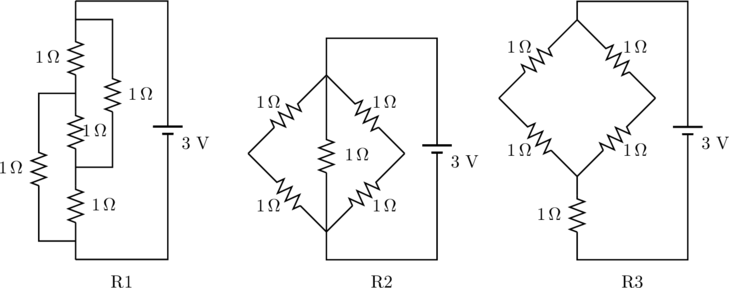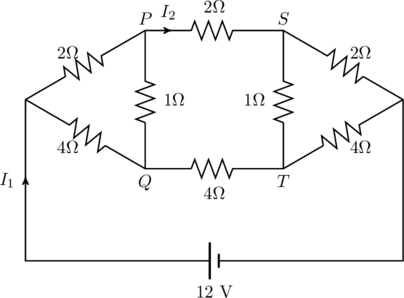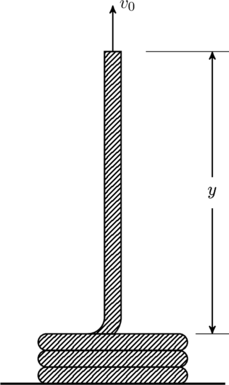JEE Advanced 2008 Paper 1, Question 25
The figure below shows three resistor configurations R1, R2 and R3 connected to ![]() battery. If the power dissipated by the configuration R1, R2 and R3 is P1, P2 and P3 respectively, then
battery. If the power dissipated by the configuration R1, R2 and R3 is P1, P2 and P3 respectively, then

Solution
The power dissipated by a resistance network is
(1) ![]()
The potential applied to all three networks arre the same, so we just need to find the resistances. Of circuits R2 and R3, the latter has a greater resistance since
(2) ![]()
whereas
(3) ![]()
The first circuit can be redrawn in the following way to make the comparison easier.…



